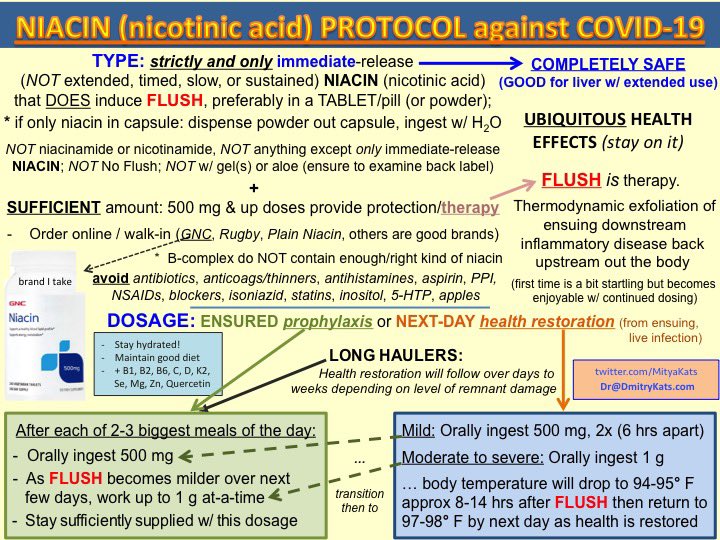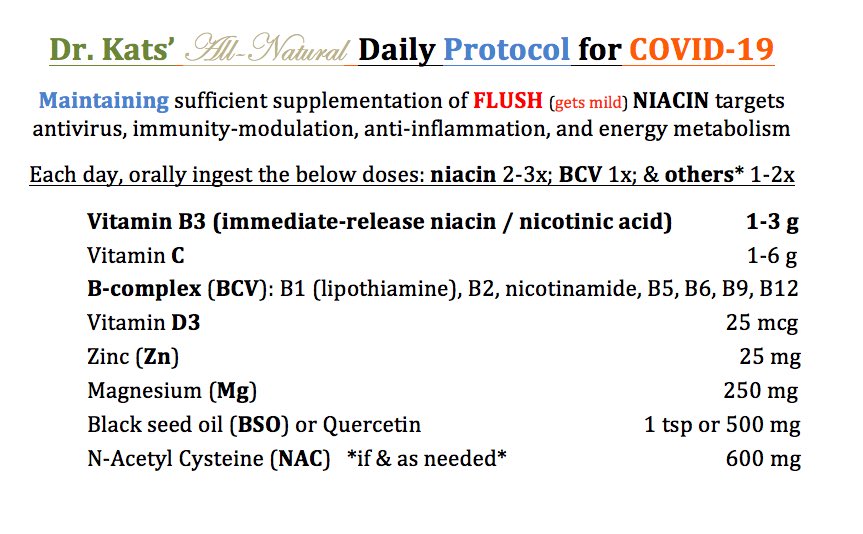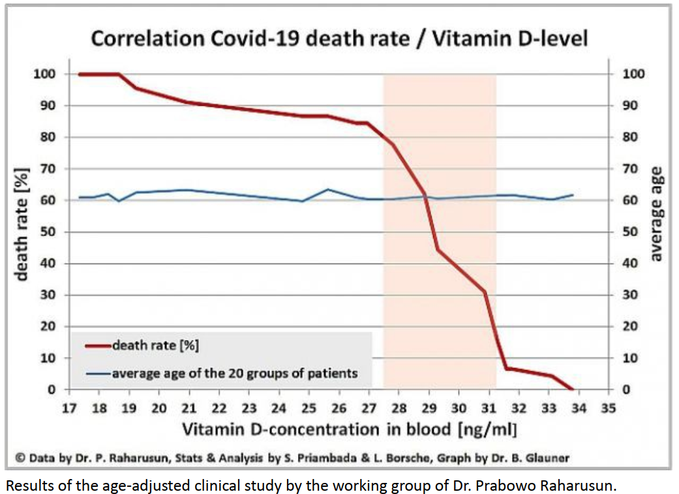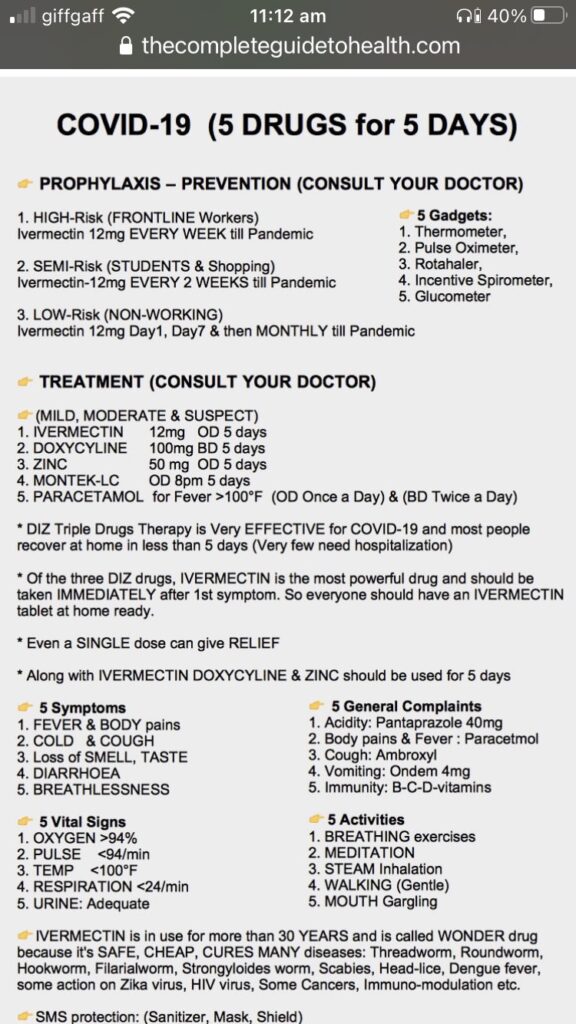I had untested Covid19 like illness Feb/March prior to when testing was available. Antibody testing wasn’t available until 3 months later and it was negative at that time. My symptoms and timeline matched the description of the still novel illness. Due to my autoimmune illness history I already was familiar with and using daily, many phytonutrients, in addition to other nutrients.
I managed to get better on my own but the symptoms got into breathless asthma like problems with non-productive cough before I started recovering and my history of colitis-like/inflammatory bowel symptoms also flared up but I was also familiar with what foods could help get that back under control instead of worsening. Severe diarrhea can be deadly too and a percentage of Covid patients did have bowel symptoms too, see the pomegranate peel section below for a link. (More specifics on my illness: Treatment vs a ‘Cure’.
Twenty two other nations besides the United States are distributing medications, nutrients, and/or therapeutics, for early at home treatment for their citizens. (rcm.imrpress.com)
Citrus Peel and Bioflavonoids
Patients could be helped with some non-toxic, inexpensive, readily available nutrients and phytonutrient foods. Bioflavonoids – citrus peel – was what I added to my routine as the non-productive cough got worse – within 10-20 minutes the mucus had loosened and my airways opened and I could cough it out. Vitamin C, chewable 100 mg (what I had), also soothed my sore throat and helped with breathing. The serving of citrus peel to open the airway (lots of research on bioflavonoids for asthma exists) that I found helpful was about 2 teaspoons of orange zest every few hours or one navel orange peeled with a sharp knife so the white pith was left on the orange instead of being removed. (citrus peel posts)
Powdered bioflavonoid is readily available for purchase in bulk and the inner pith is mild – it could simply be added to foods for patients still able to eat. Bitter taste receptors in the lungs are activated and cause thinning of the mucus, opening of airways, and increase in cilia moving the mucus up and out of the lungs. Bioflavonoids are also a source of some vitamin C, quercetin, and a variety of flavonoids that may also be available as single nutrients such as hesperidin and that might help patients who could only be given nutrients intravenously (Evaluation of the Intravenous and Topical Routes for Ocular Delivery of Hesperidin and Hesperetin). Like vitamin C, hesperidin and other flavonoids can help reduce risk of vascular problems.
Zinc Ionophores, anti-viral, anti-microbial.
Quercetin and EGCG, found in green tea and pomegranate peel, have similar anti-viral mechanism of action as Hydroxychloroquine & Ivermectin, though those medications have other anti-viral action also. Pomegranate peel also has other mechanisms of action as an anti-viral. The inner peel is milder than the outer rind and both are sources of potent phytonutrients. The inner peel can be chopped fresh or dried and powdered to add to soup or salads in small amounts, about one to two tablespoons for a recipe. The outer peel is more bitter and can be used to make a tea/extract, simmer gently for about 20-30 minutes. Overheating too long deactivates some of the medicinal nutrients.
- See: Pomegranate peel – anti-COVID19, may block ACE2 receptor access to the SARS-CoV-2 virus.
- Pomegranate Peel/extract may help increase NAD+ (involves niacin, see next section).
- Pomegranate peel catechins – inhibition of NET formation – helps prevent the clotting risk seen with more severe COVID19.
- Pomegranate, neuroinflammation, antimicrobial, metal chelator. – protects the brain from risks of excessive inflammation, and has even helped promote regrowth of hippocampal brain cells, the type damaged in Alzheimer’s dementia. Just 4-8 ounces of pomegranate juice per day helped improve behavior symptoms for patients with dementia.
- G13. Pomegranate – an overview of the many health benefits of pomegranate and pomegranate peel and tips for preparation and recipes.
Niacin and other B vitamins have anti-viral power, and are needed to help with energy level and reducing inflammation.
Adequate B vitamins are also important for preventing vascular and other symptoms. Thiamin (needed in higher amounts during an infection, Operation Thiamine – Reducing the Need for Hospitalization of Patients with COVID-19.), riboflavin, and niacin also have anti-viral action. The niacin can be very effective at higher doses, given in the ‘flush’ form, building up to 1000 mg day. (Sufficient Niacin Supply: The Missing Puzzle Piece to COVID-19, and beyond?.)
Symptoms of low niacin/B3 include dermatitis, skin rash or dryness, the lower legs in particular may show the skin symptoms; diarrhea; and worsening deficiency can cause dementia, and ultimately death if left untreated. See: Pellagra: dermatitis, dementia, and diarrhea.

shared with permission of the author, Dmitry Kats, PhD.
*The apples and antihistamines can decrease the flush effect if it seems like too much and should be fine at other times of the day, than taken with or shortly after the niacin dose.
For more about the benefits and possible risks for a few types of people, which might be reduced by the additional use of quercetin, see the post: Niacin, & early treatment in general for SARS-CoV-2 is sensible, reduces hospitalization and mortality rate.
Other cofactor nutrients besides quercetin that may be helpful in addition to niacin are included in this graphic by Dr. Kats:

People with a methylation gene difference may be at more risk because the methylated folate and B12 are essential for homocysteine metabolism. Excess homocysteine is a cause of atherosclerosis. Sulfate and vitamin C are also needed for preventing excess homocysteine (Review: Chemical Pathology of Homocysteine. V. Thioretinamide, Thioretinaco, and Cystathionine Synthase Function in Degenerative Diseases)
An overview paper describes the role the various B vitamins have in reducing inflammation and/or helping us fight a viral infection: Be well: A potential role for vitamin B in COVID-19.
Magnesium helps white blood cells kill infected cells & protects the brain from inflammation risks.
Epsom salt, magnesium sulfate, can be absorbed through skin pores (any studies about magnesium chloride not being that well absorbed have little to nothing to do with the absorbability of a hydrated magnesium sulfate molecule). The sulfate is bioactive and patients would also be helped by the magnesium. Magnesium is nature’s calcium channel blocker and so would help protect against cell damage from excess calcium being allowed into cells. Magnesium is also essential for white blood cells to be able to perform apoptosis, killing infected cells and removing them safely. Poor intestinal absorption is not uncommon and topical magnesium or intravenous may help, especially if muscle cramps are a symptom. Lab tests showing hypokalemia can also suggest low magnesium is a problem. (Mechanism of Hypokalemia in Magnesium Deficiency – JASN)
Magnesium also is needed as a calcium channel blocker to protect against stimulation by EMF energy which can also open the calcium channels. (Klinghardt pdf) See post: EMFs and Intracellular Calcium – Magnesium is nature’s calcium channel blocker. For the long hours of sleep in particular it can help reduce inflammation risk to remove or turn off WiFi devices from the sleeping area or nearby rooms. Various products are available that block EMF such as cell phone cases and modem covers which help reduce excess energy release, (educateemf.com/WiFi Router Guards) turning it off while sleeping would be ideal if possible.
The SARS-CoV-2 virus can add viroporins to the infected cell’s membrane which allows calcium to enter. The excess calcium within a cell causes the creation of NLRP-3 inflammasomes which produce cytokines that increase inflammatory changes in other cells, (“pro-inflammatory IL-1β cytokines“). (Klinghardt/3/19/2020,pdf) The viroporin channels vary somewhat for different virus and one type is blocked/inhibited by the anti-viral medications “amantadine and rimantadine.” (viroporins) Adequate magnesium would help protect other cells if/when an infected cell burst open to release the newly replicated virus from the infected cell. Phytonutrients that may help inhibit NLRP-3 inflammasome assembly are listed towards the end of this post: Phytonutrients that may help against SARS-CoV-2.
Avoiding EMF exposure would help by not adding more activation of our own calcium channels and promoting even more entry of excess calcium into all of our cells (our whole body being exposed to the EMF somewhat equally depending on the source, or more to our ear/hand if holding a smartphone). (Klinghardt/3/19/2020,pdf)
Blackout curtains or an eye mask for sleeping or napping can help with eye sensitivity and may help the body make more melatonin which has protective effects against viral infection and inflammasome production. Vitamin C also reduces inflammasome production and can reduce over negative effects on blood vessels. (Klinghardt/3/19/2020,pdf)
Zinc helps us make antibodies and immune cells, and has antiviral power when given with a zinc ionophore.
Zinc is needed to make mature T-cells and for the thymus gland to make antibodies. Zinc is needed for the gene transcription of bitter (and other) taste receptors. Patients who have lost their sense of taste and smell may be experiencing zinc deficiency. Zinc is involved in protein replication and zinc ionophores are antimicrobial because of the ionophore carries the zinc to cells with excess iron (sign of infection or cancer) and help the zinc enter the cell where the zinc then disrupts protein replication – so no virus will be made. The current nutrient guidelines for zinc are likely half what an elderly person needs to promote thymus gland function. During an acute infection more can be given safely but high dose zinc can accumulate so is not for long term use. (jenniferdepew.com/zinc) (other nutrients that may promote T-cells)
Zinc ionophores that have been found effective in many other nations of the world include hydroxychloroquine and ivermectin. Hydroxychloroquine has been safe and effective if given within the first few days to week of symptom onset and ivermectin has been found helpful in preventive, early treatment, and later stage treatment. Phytonutrient zinc ionophores that I was using anyway include quercetin and EGCG from pomegranate peel (my primary source – it is a main research interest of mine) or green tea. (effectivecare.info/pomegranate)(Pomegranate peel – anti-COVID19, may block ACE2 receptor access to the SARS-CoV-2 virus)
- Ivermectin, a zinc ionophore, has helped in South America and elsewhere, review.
- Hydroxychloroquine is also a zinc ionophore and has also been found effective given early with zinc and azithromycin: study .
- Quercetin and EGCG are phytonutrient zinc ionophores that also have shown some benefit as antivirals against SARS-CoV2 and are available in foods and as herbal supplements.
Zinc is also needed for beneficial intestine microbes. Poor gut health has been linked to severe COVID19.
Zinc is also critically important for having a healthy microbiome – intestinal bacteria that help us instead of harming us. Beneficial species use as much as 30% of the zinc from our diet and if our daily diet is consistently low in zinc then more harmful species that don’t need zinc will grow instead. (Chronic Dietary Zinc Deficiency Alters Gut Microbiota Composition and Function, ) Poor gut health has been linked to more severe COVID19. (New Research Shows Poor Gut Health Connected to Severe COVID-19 – Probiotics May Help Patients)
Vitamin D deficiency has been found in as many as 80% of patients with severe COVID19 – it is needed for immune function & reducing risk of an over reaction that is inflammatory & can lead to long term autoimmune disease.
Vitamin D has been clearly shown to be a factor in severe COVID19 (an early study, April 2020) and it is unclear to me why the population as a whole is not being encouraged to take vitamin D and zinc right away – both are needed before an infection ideally. The vitamin D helps reduce risk of an autoimmune type cytokine over-reaction and the zinc is needed to make antibodies and help T-cells to change from immature to functional.
“Studies … show an increased risk of infection in those with low vitamin D levels and a 25 to 30-fold reduced risk of ICU admission and a substantial reduction risk of death in older COVID-19 patients supplemented with vitamin D.” ~ Dr. Dan McCartney
Vitamin D and SARS-CoV-2 infection—evolution of evidence supporting clinical practice and policy development, McCartney et al, 2020. (quote via @mercola)
Low vitamin D levels has been associated with a greatly increased risk of death from severe COVID-19. Levels of vitamin D above 33 ng/ml seems most protective and the greatest risk seen with levels below 27 ng/ml according to one study. (Raharusun et al, an early study, 4/2020)

“Results of the age-adjusted clinical study by the working group of Dr. Prabowo Raharusun,” Patterns of COVID-19 Mortality and Vitamin D: An Indonesian Study, an early study, 4/2020.
Standard nutrient guideline dosing of vitamin D may be adequate for protection but it needs to be prior to exposure to the infectious pathogen. Defense doesn’t help as much after an allergic/autoimmune over-reaction already developed. A review found that moderate dose supplements in advance helped reduce risk of respiratory infection by as much as 50%, while mega dose supplements of vitamin D taken after the respiratory infection had already begun were not significantly helpful. (Vitamin D supplementation to prevent acute respiratory tract infections: systematic review and meta-analysis of individual participant data) The vitamin D3 form is more bioactive than the vitamin D2 form that is more typically available in one-a-day type supplements, if you have a choice about what to buy.
Pomegranate peel has anti-viral effects, a zinc ionophore and other phytonutrients that have brain protecting effects, and it can help intestinal health.
Pomegranate peel is a good source of hydrolysable tannins which can be healing to mucus membranes/GI tract) in smaller amounts and an irritant in larger amounts, also a diuretic, so dosing does matter – but I had colitis like flare-up with my CoV-like illness and my bean soup with a little pomegranate peel and Gumbo file was very soothing. The second half of this post has a list of hydrolysable tannin sources and mucilaginous foods or seasonings, which include Gumbo file: ACE2, Diarrhea, & COVID19 – it gets complicated.
Selenium deficiency is also more common in patients with severe COVID19.
Selenium deficiency has also been associated with more severe COVID19. Iodine is needed for immune function but I haven’t seen a direct finding of deficiency associated with severe CoV19. Vitamin A deficiency causes lack of immune function but excess conversion to active retinoic acid within the liver may be a factor in LongCovid – I have improved my health post CoV by reducing beta-carotene foods and I already had cut out all animal products during a previous autoimmune flare-up which helped. At the time I suspected I had developed an albumin autoimmune problem but maybe vitamin A was involved. I am still reading on this topic, very complex (Retinoid Toxicity)
Omega 3 fatty acids are anti-inflammatory and may help protect against death from COVID19.
Omega 3 fatty acids are the type found in fish oil, known also as EPA and DHA, and precursor, ALA, found in plant sources such as walnuts, flax seed meal and Black Currant Oil. Patients with severe COVID19 who had higher levels of omega 3 fatty acids had lower risk of dying of the infection than people with lower levels. (nutraingredients-usa.com) Omega 2 fatty acids EPA and DHA have been found to be made into a endogenous cannabinoid form that has anti-inflammatory benefits. (Emerging Class of Omega-3 Fatty Acid Endocannabinoids & Their Derivatives)
Post recovery may have fatigue from anemia of chronic inflammation and worse symptoms may involve overproduction of the active form of vitamin A – retinoid toxicity.
The liver changes that lead to overproduction of active vitamin A can occur with Epstein Barr viral infection. I had mononucleosis in high school and chronic fatigue type symptoms since then, off and on. Post recovery this March I was still extremely fatigued and it felt like anemia of chronic inflammation/infection to me and I added artemisinin twice a day as an iron chelator and it helped within just a day or two, I was able to start going on short walks outside instead of feeling like the bedroom to the kitchen was too much exercise. (Artemisinin, arteannuin-B, sgp130Fc and COVID-19)
Pain hurts. Health is better. We need all of the nutrients for health and in much greater amounts for some during illness. During health we make the antioxidant equivalent of 300 oranges – during illness we may no longer be able to do so, but we can’t eat 300 oranges, two teaspoons of citrus peel would have more antioxidants than one orange.
Resources with dosing recommendations for early or preventive self care by medical groups or professionals.
Regarding dosing for supplements – see an individual health care provider for individual guidance and here are some recommendations by medical groups or medical professionals:
- Immediate Treatment for Early Stage SARS-CoV-2 Infections Recommended To Be Supported Nationally Starting Now, Authored by Ben Kaplan Singer, M.D.; Daniel Stickler, M.D.; Avery J. Knapp Jr., M.D.; with many contributing doctors. (googledoc)
- TCM Treatment of COVID-19, based on extensive experience in Chinese hospitals, by Adam Tate, March 20, 2020, updated March 25, 2020. (medicinetraditions.com) — This document includes a description of the progressive or varying stages of COVID19 illness. It includes examples of symptoms that occur in the different stages, and herbal recipes recommended for the specific stage and symptom set. The Chinese medical professionals have found that a combination of the traditional medicinal herb mixtures and modern medicines to be more effective than either alone for treating patients with more severe COVID19 infections.
- EVMS Critical Care COVID-19 Management Protocol, Developed and updated by Paul Marik, MD (17)
- The Zelenko Protocol with over-the-counter self care and clinician guidance for the medication dosing is available here: Zelenko Protocol. For prevention: Zelenko COVID-19 Prophylaxis Protocol.
- Dr Klinghardt’s COVID-19 Prevention & Treatment Guidance Summary, (website/to download pdf) (pdf) (summary pdf)
- Physician Secrets Revealed: Outpatient Treatment For Covid-19, By Peter A. McCullough, MD, MPH (physicianoutlook.com)
A graphic summary of care guidance said to be used in Australia was shared on a social media site (harley_carter1). The protocol recommends Ivermectin, zinc, doxycyline, Montek-LC, Paracetamol for fever (better known as acetaminophen in the US). However I am unsure of the specific origin other than the site on the screen shot: (thecompleteguidetohealth.com/ivermectin.html#AUSTRALIA).

Disclaimer: This information is provided for educational purposes within the guidelines of fair use. While I am a Registered Dietitian this information is not intended to provide individual health guidance. Please see a health professional for individual health care purposes.

